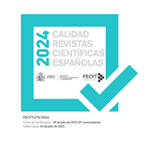What Motivates L3 Learners’ Investment and/or Divestment in Arabic? Understanding Learning Motivation in terms of “Identity”
Resumen
The study extends our understanding of the relationship between identity and Arabic learning in the Chinese context from a sociolinguistic perspective. Drawing on Darvin and Norton’s (2015) model of investment, the study explores the interplay between identity and investment in the context of Chinese learners’ motivation to learn Arabic. The sample population comprises 25 adult Arabic learners with Chinese as their first language, English as their second language, and Arabic as their third language. Qualitative data from learners’ retrospective narrative accounts and complementary semi-structured interviews were analyzed in terms of identity and investment. The findings show that these Chinese Arabic learners’ constitutive orientation towards language learning is highly related to their multifaceted and fluid identities (inherited identities, competitive identities, and imagined identities), which are complex and dynamic and can be negotiated and constructed over time, involving learners’ perceptions of affordances in capital resources and their goals of acquiring symbolic and material resources. Therefore, investment/divestment is influenced by the interconnections between identities and perceptions. The study concludes with some methodological and theoretical implications for future research on learning LOTEs (languages other than English) and investment.
Descargas
Descarga artículo
Licencia
La revista Círculo de Lingüística Aplicada a la Comunicación, para fomentar el intercambio global del conocimiento, facilita el acceso sin restricciones a sus contenidos desde el momento de su publicación en la presente edición electrónica, y por eso es una revista de acceso abierto. Los originales publicados en esta revista son propiedad de la Universidad Complutense de Madrid y es obligatorio citar su procedencia en cualquier reproducción total o parcial. Todos los contenidos se distribuyen bajo una licencia de uso y distribución Creative Commons Reconocimiento 4.0 (CC BY 4.0). Esta circunstancia ha de hacerse constar expresamente de esta forma cuando sea necesario. Puede consultar la versión informativa y el texto legal de la licencia.











